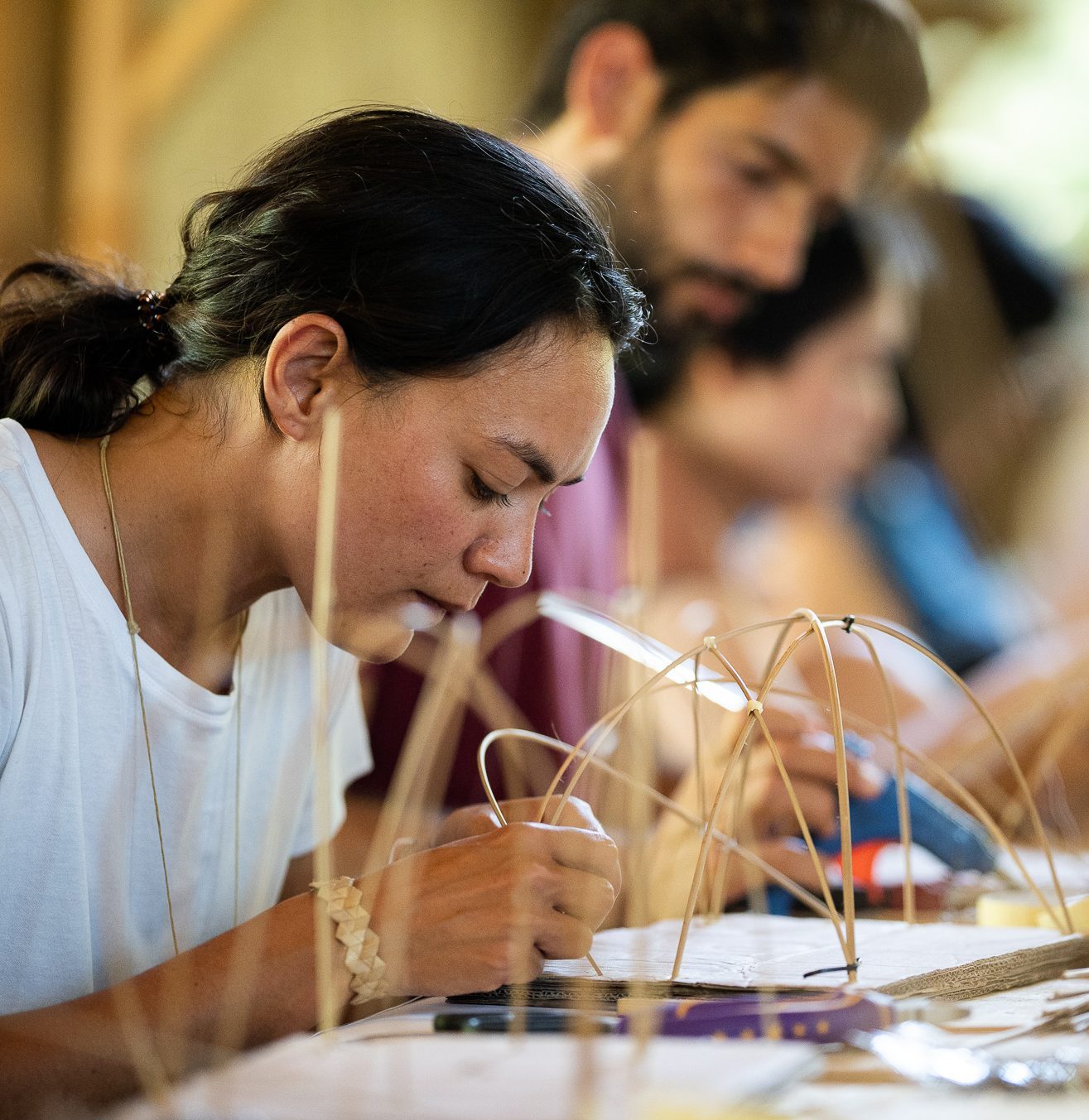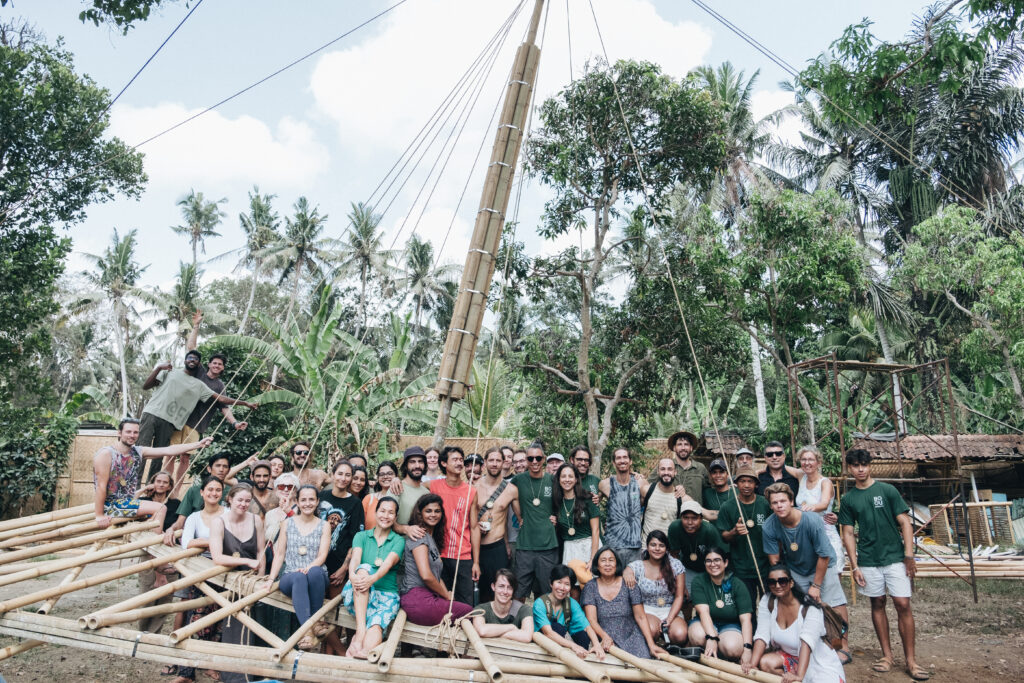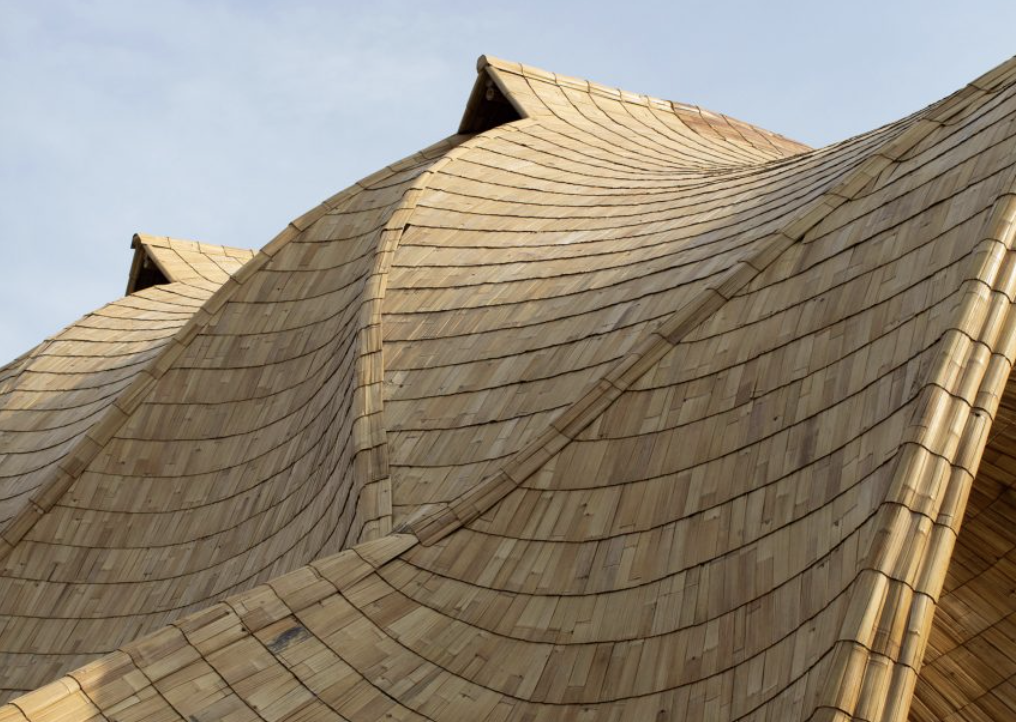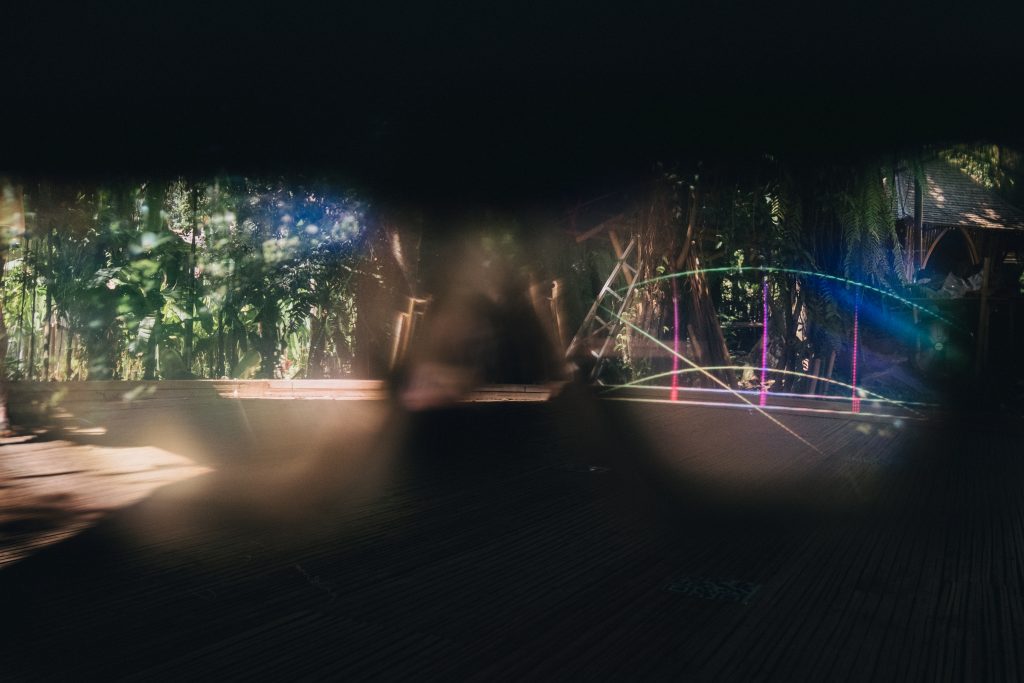The Use of Guadua in Bamboo Construction
By Rodrigo Istchuk | August 23, 2023 | Design - Construction -

Explore Guadua's profound impact on bamboo construction from traditional Colombian architecture to modern seismic-resistant global standards.
Regarded as one of the world's strongest species of bamboo, Guadua - native to Central and South America - stands as a testament to nature's engineering excellence. Beyond its physical strength; its impact on traditional and modern architecture, particularly in Colombia, is profound. This article explores the multiple facets of Guadua, delving into its unique characteristics, its historical and modern applications in construction, and the pioneering role it plays in defining global bamboo construction standards.
Discovering Guadua: From Ancient History to Modern Times
Our journey with Guadua begins back in 1502, when Christopher Columbus, on his voyages through Central America, came upon what he described as "canes so thick as the legs of a strong man." This serendipitous encounter with Guadua unraveled the mysterious source of these canes, occasionally found washed up on European shores but unknown in their origins. This episode, in which bamboo played an unexpected role, led to the discovery of the Mexico Gulf Stream, a strong ocean current that revolutionized seafaring by enabling faster travel from Mexico and Central America until this day (Hidalgo, 2003).
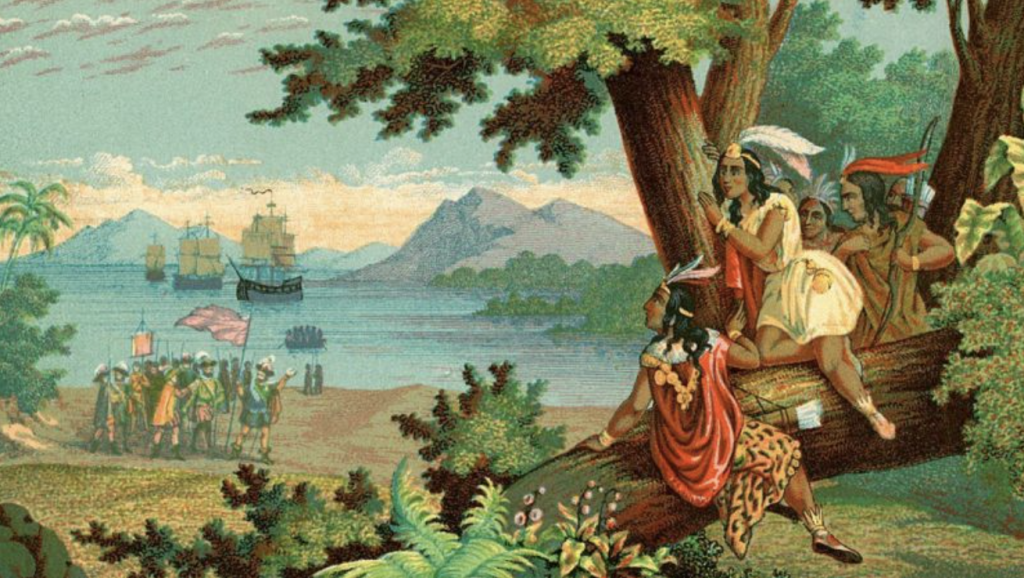
Before the waves of colonization swept through, South and Central American landscapes were generously dotted with dense Guadua forests. Its use is so ancient that, according to Hidalgo (1978), archeological evidence suggests that Guadua was skilfully harnessed by the Incas to engineer magnificent structures, bridges, vessels, tools, and instruments that are a testament to a relationship of nearly 9500 years.
Afterward, during the colonial period, Guadua played a crucial role in protecting native settlements from the Spanish conquest. An illuminating record by Fray Geronimo Escobar paints a vivid image of an ancient city, originally located where Pereira in Colombia now stands, which was once enveloped by a vast bamboo fortress spanning over 57 kilometers in width (Hidalgo, 2003).
In modern times, most of these vast Guadua forests have succumbed to the demands of cattle ranching and monoculture farming. Yet, the resilient Guadua continues to play an essential role in sustainable architecture, as we rediscover the wisdom of our ancestors and harness the power of this extraordinary material.
The Uniqueness of Guadua
While botanically classified as a clumping bamboo, Guadua exhibits a 'walking' behavior, distinguishing it from typical running bamboo species that spread rapidly and densely. Guadua's growth is more gradual, resulting in a wider spacing between individual culms. This unique characteristic simplifies harvesting, as poles are not tightly entwined, reducing extraction time and effort. The spaced-out growth also contributes to its harmonious coexistence with other native tree species in forests, thus promoting biodiversity and ensuring a balanced ecosystem.
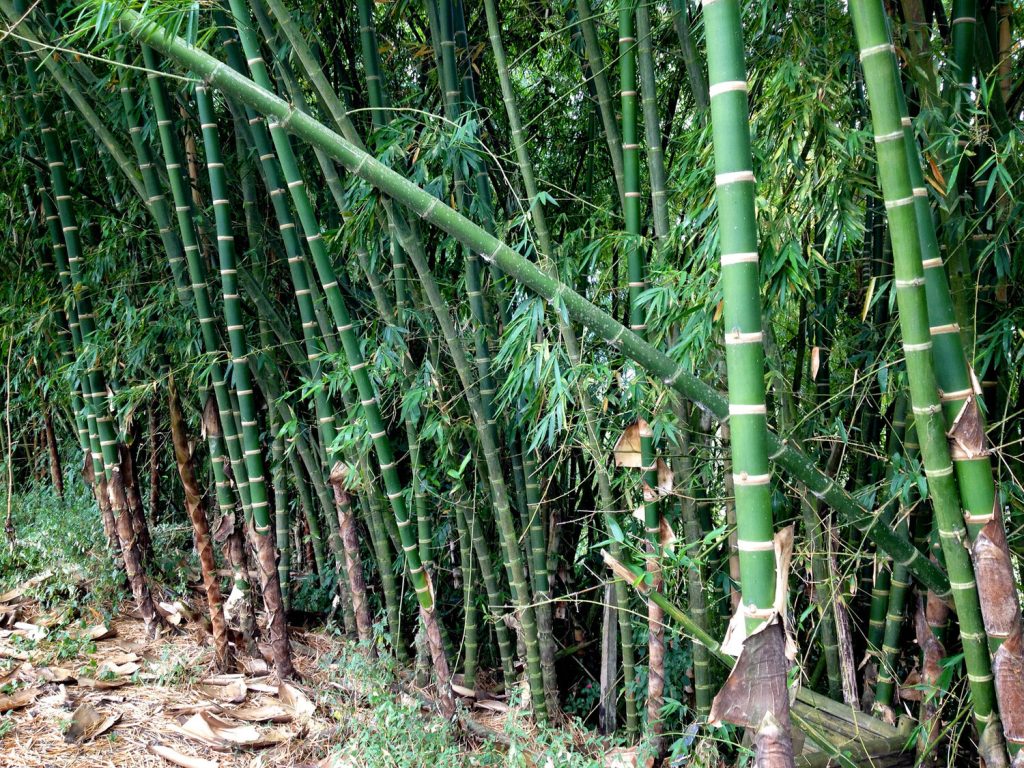
A standout characteristic of Guadua is its impressively straight poles - a feature not common among many bamboo species, offering significant advantages in construction when straight, strong materials are often valued. Mechanically, Guadua parallels other structural-grade bamboo species, such as Dendrocalamus Asper, and holds an impressive profile that outpaces most softwood timbers by at least two-fold in compression, shear, and flexure, and more than three times in tension. Moreover, Guadua’s short internodes contribute to extra resistance against bending and buckling, while also providing multiple options for strong connection and joinery points.
However, working with Guadua is not without its challenges. Sharp thorns on its culms and branches require careful handling and protective gear during harvesting operations. Despite these hurdles, Guadua's unique characteristics continue to underscore its importance and potential in the world of bamboo construction in the Americas and especially in Colombia.
Guadua in Colombian Heritage: Traditional and Modern Applications
The central coffee-growing region of Colombia presents a vivid testament to Guadua's versatile role in traditional architecture. Dating back to the 19th century, the colonization process led to an architectural style that merged pre-Hispanic Guadua construction techniques with Hispanic influences. This includes a traditional and incredibly resilient earth-building technique that uses Guadua poles or mats to provide structural support to the walls.
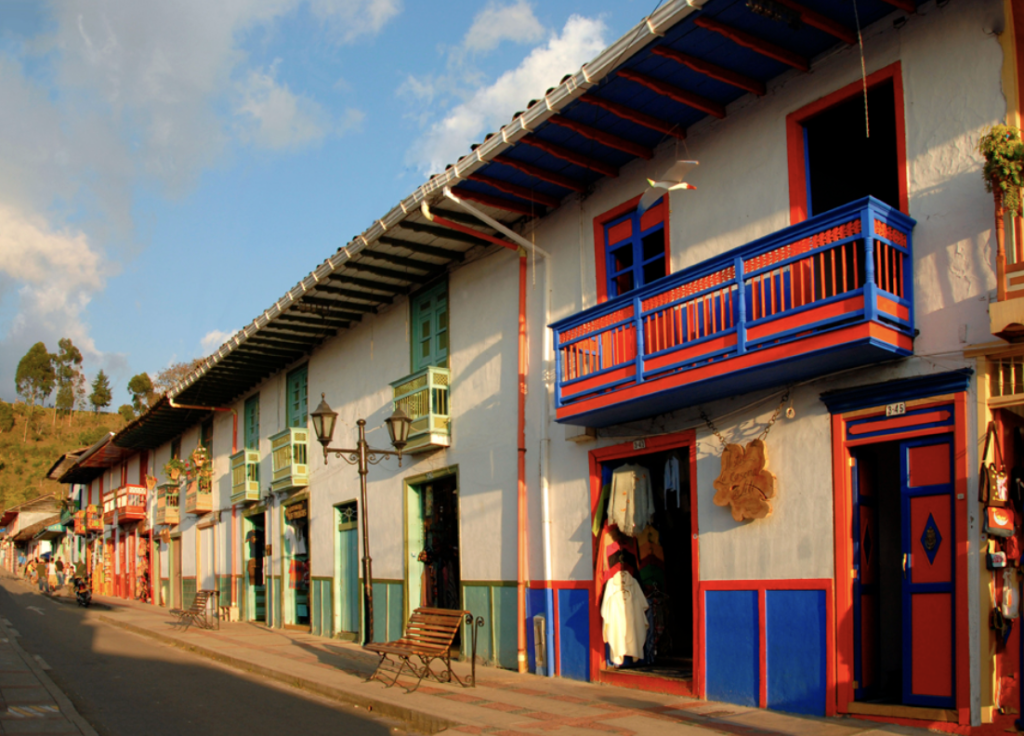
Street in Saliento, Quindio. Surprisingly, the walls of these colonial-style buildings employ Guadua mats in their interiors (Revista Credencial)
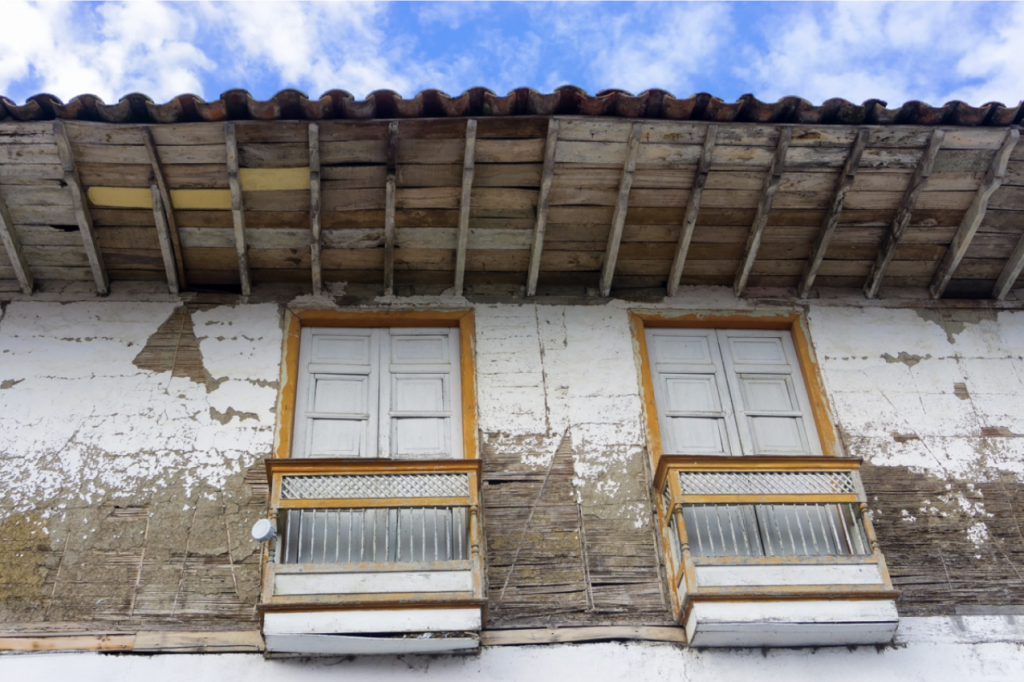
Saliento, Quindio - Earth, wood, and Guadua mats (Revista Credencial)The strong presence of Guadua in traditional Colombian architecture acts as a testament to its versatility and durability, often presenting efficient solutions to the challenges posed by mountainous topography. These houses are often supported by scaffolding that can rise up to three or four stories high. The flexibility inherent in these structures ensures superior seismic response, a quality some authors believe accounts for the widespread adoption of Guadua construction in these regions (Tobón Botero, 1985).
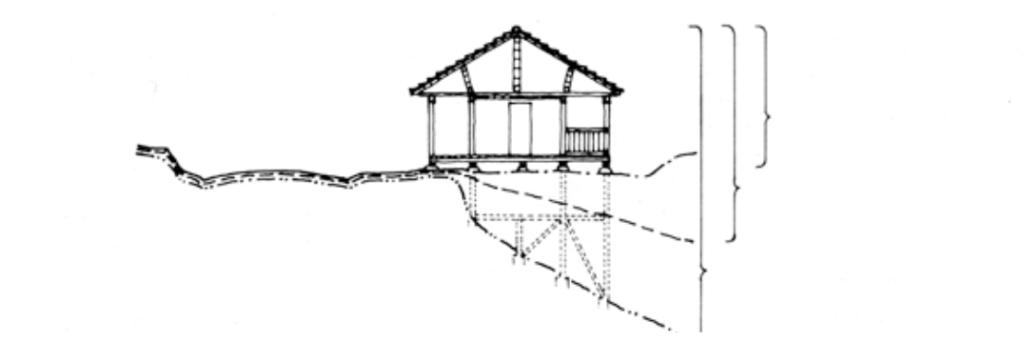
The seismic event of 1999, registering 6.2 on the Richter scale, served as a wake-up call, prompting a newfound appreciation for Guadua's earthquake-resistant properties. Guadua-constructed buildings showcased remarkable resilience, with many of these structures surviving the quake or sustaining minor damage. Spurred by this testament to Guadua's natural resilience, the Colombian government initiated the inclusion of Guadua in the NSR-10, or "Normas Colombianas de Diseño y Construcción Sismo Resistente." This groundbreaking inclusion of Guadua made NSR-10 the world's first construction code to feature bamboo-specific guidelines (Archila-Santos, 2012).
NSR-10, primarily a guide for seismic-resistant design and construction in Colombia, now devotes specific sections to detail the suitable use of Guadua in construction. This inclusive move validated Guadua's outstanding structural performance, stimulating its broader acceptance and application in the sphere of modern construction. Crucially, NSR-10's adoption of Guadua set the groundwork for the International Bamboo Standard ISO 22156, a landmark document now globally acknowledged as a crucial reference for structural design within the bamboo industry.
Contemporary Guadua Architecture: Spotlight on Significant Works
In more recent developments, a shift has brought Guadua into the spotlight. Instead of being concealed within the walls, Guadua has started taking center stage, becoming the architectural focal point of buildings. This transformative trend is partly attributed to the work of Colombian architect Simon Velez, which has pushed the limits of bamboo construction to achieve more modern and contemporary structural and architectural expressions.
A shining example of Velez's pioneering work with Guadua is the Zeri Pavilion, constructed for Expo Hannover in 2000. Embodying the spirit of Colombian craftsmanship, the Pavilion was constructed using 3,500 rods of Colombian Guadua, with 40 specialized workers from Colombia assembling the structure without the need for cranes. The Pavilion's specifications include a floor plan with 40m diameter, and columns ranging from 8m to 14m in height. The roof consists of a metallic mesh, topped with 3 cm of cement mortar and cement tiles reinforced with bamboo fibers. This work reinforced Guadua's central role in several steps of the design, in one of the first projects that showcased Bamboo as a reliable construction material to the world.
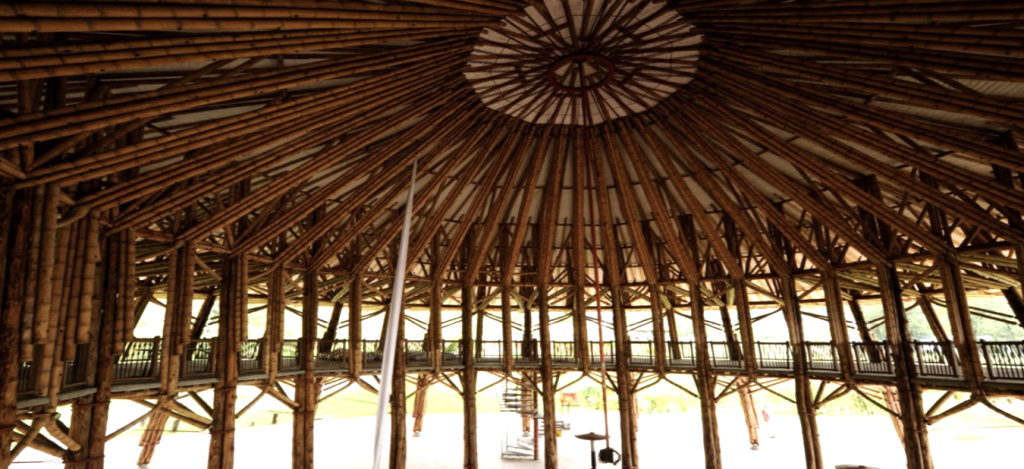
Vélez's innovative techniques played a significant role in shifting perceptions around Guadua. His approach transformed what was once considered a humble material into a highly respected, even noble, element of construction. This change in perception extended even to Colombians themselves, who started to view their native bamboo species in a new light.
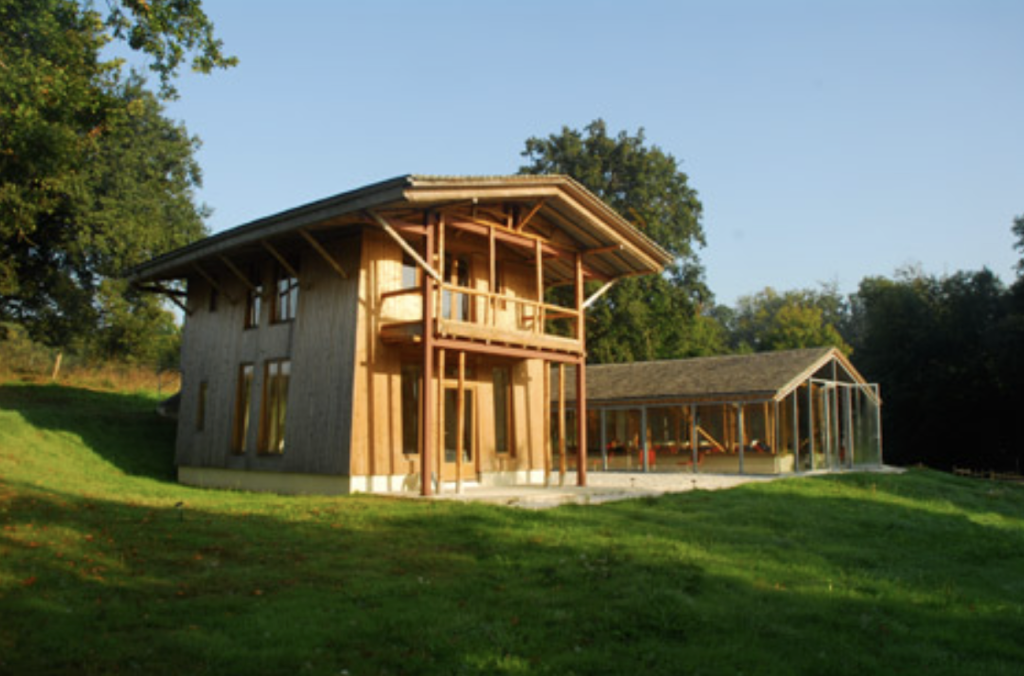
An innovative technique by Velez, involving injecting liquid cement into the bamboo at connection points, enabled Guadua to rival conventional construction materials. This strength, already known to Guadua, was further validated and popularized by the Colombian standard NSR-10, broadening the scope of Guadua's applications significantly.
Another notable project is the Catedral de Nuestra Señora de la Pobreza located in Pereira, Colombia. Initially constructed after a devastating earthquake in 1995, the Cathedral showcases the structural potential of Guadua and its natural adaptability to construct designs that resemble traditional Gothic churches.

In recent developments, there has also been a push towards mitigating the housing deficit in Colombia through the innovative use of Guadua. Advancements in bamboo construction technology have spurred the development of standardized bamboo panels and structural elements as an alternative to traditional timber. These strides highlight Guadua's versatile nature and potential for sustainable mass production, positioning bamboo as a key player in the future of the construction industry.
Meanwhile, outside of Colombia, Guadua's potential is being explored in fresh contexts. The Luum Temple, located in the vibrant jungles of Tulum, Mexico, showcases the essence of Guadua's potential. The CO-LAB design office, inspired by Felix Candela's concrete shell work, designed the Temple as a tranquil space for visitors to unwind under its impressive grid shell cover.
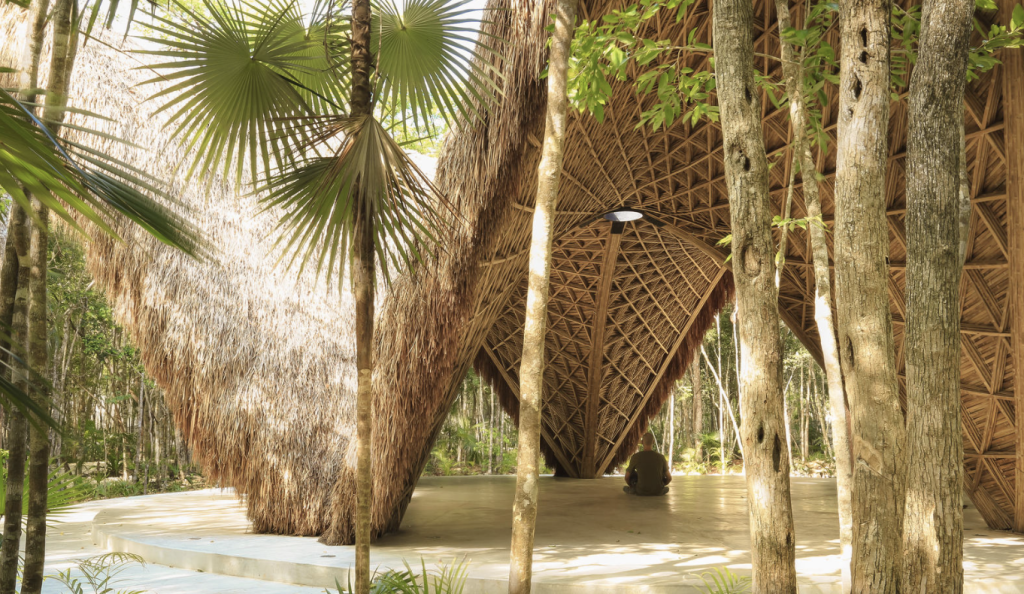
The assembly of the Luum Temple exemplifies the potential of working with Guadua splits. Once the main arches were erected, they were interwoven through a structural triangular pattern, providing further strength and stability to the structure. To further fortify the construction, two continuous layers of tightly woven bamboo lattice were added, and interlaced in opposing directions. This technique enhanced the structural stability of the building, converging all elements to form a unified, interdependent structural entity and ensuring its resilience against powerful environmental forces.
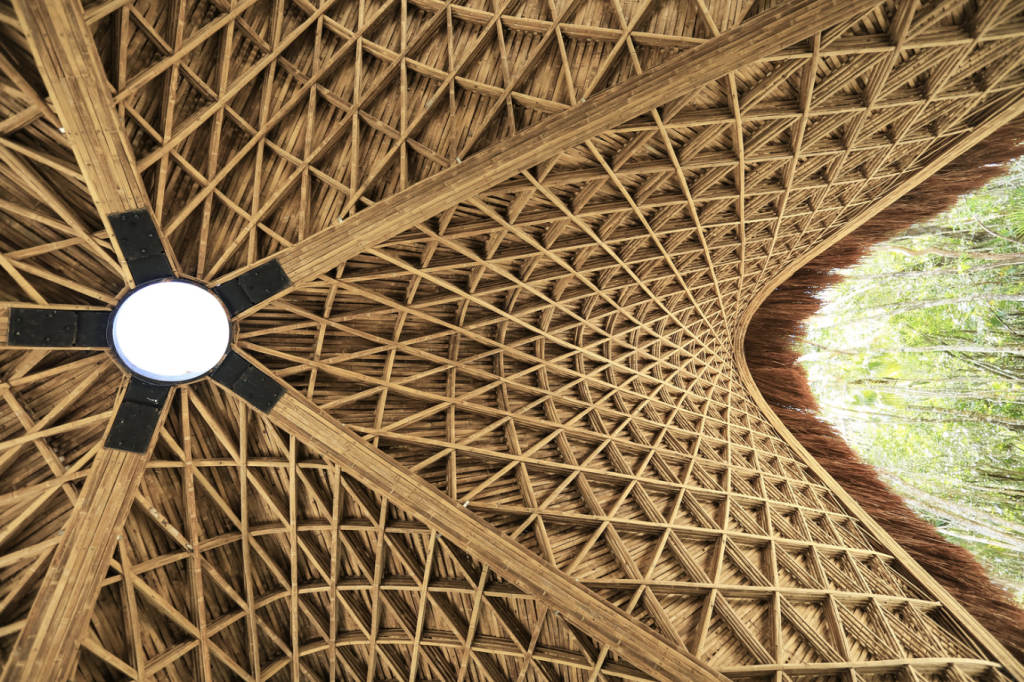
Engineered to resist hurricane winds and earthquakes, the Luum Temple emerges as a symbol of Guadua’s potential in the context of contemporary and parametric bamboo architecture. In essence, the Luum Temple combines timeless design and engineering excellence with both traditional and innovative craftsmanship. It is a beacon that spotlights the vital role of Guadua at the heart of sustainable, resilient bamboo construction.
The Takeaway
Guadua's journey in Bamboo Construction mirrors a broader narrative: that of a natural material, historically respected for its inherent properties, now finding renewed relevance in modern, sustainable, and seismic-resistant structures.
Moreover, the pioneering development of the Colombian standard NSR-10, and the more recent ISO 22156, highly inspired in the Colombian predecessor, underscore the possibilities of integrating Guadua and other bamboo species into contemporary construction practices. From humble rural homes to grand architectural edifices, Guadua has displayed its applicability and versatility, and the future looks promising.
However, the journey of rediscovery and application of Guadua is just beginning. As we learn to harness the potential of this remarkable bamboo species better, we invite you to join this journey of exploration and innovation.
At Bamboo U, we offer online and in-person courses tailored to inspire and educate about the limitless possibilities of many bamboo species in construction. Take the first step towards sustainable architecture with us by joining one of our programs.
______
References
- Archila-Santos, H. F., Ansell, M. P., & Walker, P. (2012). Low carbon construction using Guadua bamboo in Colombia. Key Engineering Materials, 517, 127-134.
- Luum Temple / CO-LAB Design Office" [Templo luum / CO-LAB Design Office] 18 Jun 2019. ArchDaily. Accessed 4 Jul 2023. <https://www.archdaily.com/919129/luum-temple-co-lab-design-office> ISSN 0719-8884
- Hidalgo López, O. (2003). Bamboo: the gift of the gods. O. Hidalgo-López.
- Hidalgo López, O. (1978). Nuevas técnicas de construcción con bambú (No. 676.14 H5).
- Tobón Botero, N. (1985). Arquitectura de la colonización antioqueña. Bd. I: Antioquia. Bogotá.
- Vélez, Simón and Villegas, Marcelo. "ZERI Pavilion, EXPO 2000, Hanover, Germany". Building with Bamboo: Design and Technology of a Sustainable ArchitectureSecond and revised edition, Berlin, Boston: Birkhäuser, 2016, pp. 134-135. https://doi.org/10.1515/9783035608656-035

Structural Engineer from Brazil, specializing in Bamboo Structures and Bio Architecture. With a multidisciplinary approach, Rodrigo has been teaching, designing, and collaborating with various Bamboo players around the world. For Rodrigo, bamboo is a tool to create meaningful change in people and the environment.
June 7-18, 2024
The 11 Day Bamboo Build & Design Course in Bali
In 11 days, we'll show you how to build bamboo structures we’ll share all that it takes to build with nature.
April 26, 2024
The Fundamentals of Building with Bamboo Online Course
All the fundamentals you need to get you started working with bamboo. Deep dive into cinematic videos and step-by-step guides that will provide you with a strong understanding of bamboo as a design and building material.











